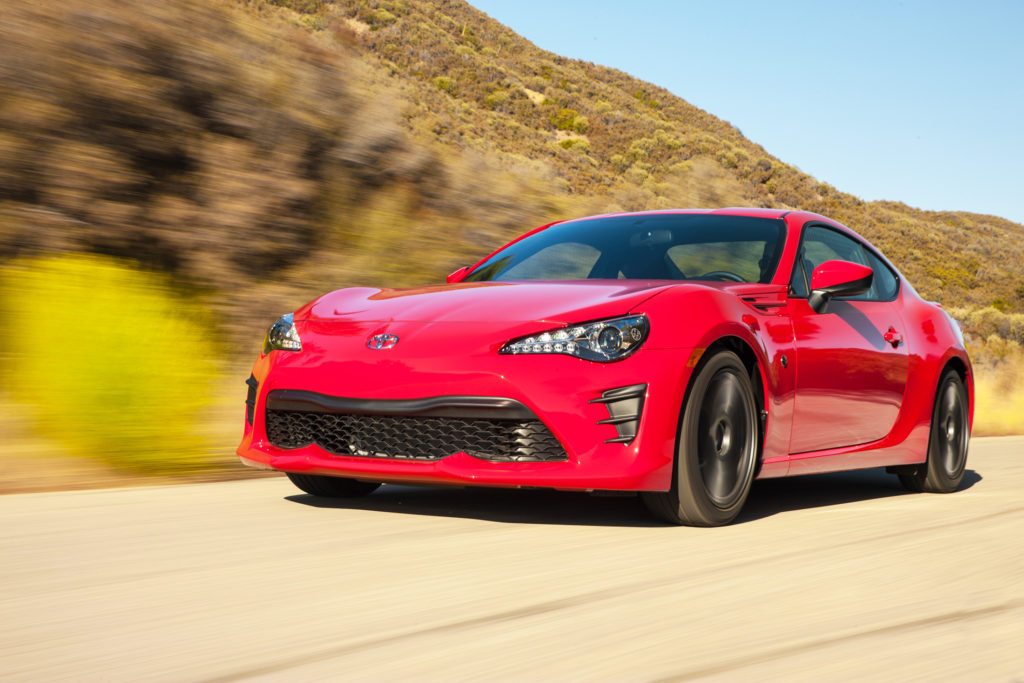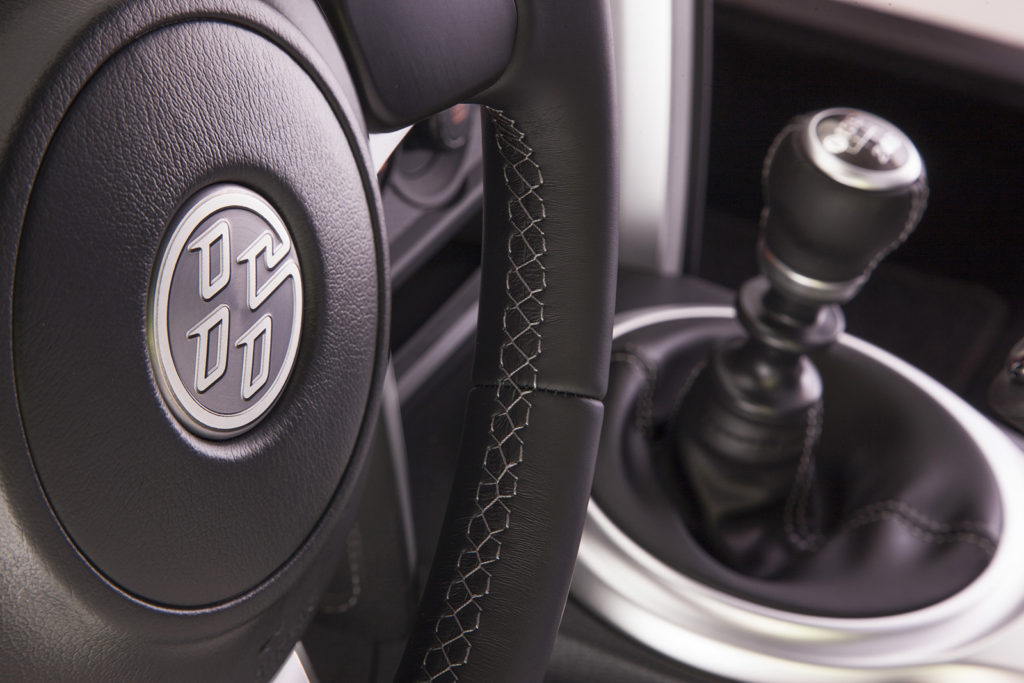Cargazing
By Derek Price
In fact, I used to wonder why there are no cars in the sky — flying cars sound like a wonderfully fun thing to test-drive for newspapers — until I got my pilot’s license and bought my own little airplane. That’s when I realized that flying cars will never, ever be possible.
It’s not that it’s technically difficult to make one. NASA engineers used slide rules to send people to the moon, so the know-how has been available for decades.
The problem comes when you realize the tradeoffs.
Any decent, safe, smooth-riding car will make a slow, heavy, thirsty pig of an airplane. And any nice-flying plane will make a delicate, noisy, bumpy, unsafe monstrosity of a car.
You could make a flying car, sure, but who would want it? It sounds like a lovely idea until the moment someone dings your aileron with a shopping cart in the Walmart parking lot.

The 2017 Toyota 86, which was known last year as the Scion FR-S, is a purpose-built sports car with remarkable, precise handling that makes the driver feel connected to the road.
Car companies face the same dilemma every time they design a sports car, something Toyota certainly dealt with when making its brilliant 86.
If you’ve never heard of the 86, you’re not alone. It was called the Scion FR-S until last year, and even under the old name it never sold in huge numbers.
When the Scion brand closed up shop last year, the FR-S — easily Scion’s best product, and perhaps one of the best cars Toyota’s ever made — got a new numerical name and an awkward slot on the sales floor next to Camrys and Corollas.
People who love pure, purpose-built sports cars, though, already know all about this car. If they don’t, they should.
With rear-wheel drive, sleek looks and a back seat that can comfortably hold two legless passengers, this is a car that doesn’t mind making a few tradeoffs to achieve marvelous handling.
It’s built not as a bloated Swiss Army knife that can do everything. Instead, it’s a finely crafted paring knife that feels perfectly balanced in your hand to do just one job.
To get this level of purpose-built excellence, you’d normally have to turn somewhere expensive and probably German. To me, the 86 feels a lot like what Porsche would build if it decided to make a $26,000 sports car.
Toyota knew this kind of car would appeal to a relatively small core of enthusiasts, though, which is why they partnered with Subaru to split the costs of bringing it to market. Subaru’s version, called the BR-Z, is equally optimized for smiles.
And if you like this sort of car — something you’ll know the moment you turn into your first corner — you’ll be smiling all day long.
Its body is designed to be strong and light, with the engine placed close to the ground for better center of gravity. Its suspension is noticeably firmer than most sports cars, especially the new Mazda Miata with its squishier springs and added body roll for 2017, making the 86 feel like a more hard-edged, track-focused car out of the box.
And like the Miata, the 86 feels like it’s going much faster than it really is. All the wonderful sounds and sensations make you imagine you’re going 80 when you’re really only going 50, something that makes it all the more fun in my book.
Best of all, it’s not trying to be a flying car, everything to everyone.
Today’s car market has a manic obsession with sportiness. There are sports sedans, sporty crossover vehicles and high-performance SUVs for the racetrack. But why? They’re all trying to be something they’re not, and they end up being lackluster in both roles.
You can still find true, honest-to-goodness sports cars that are designed for one job, though. They’re hard to find, but they’re out there.
This year, you might find them parked next to a Sienna minivan at your Toyota dealer.
At a Glance
2017 Toyota 86 ($26,255). Options: None. Price as tested (including $865 destination charge): $27,120
Wheelbase: 101.2 in.
Length: 166.7 in.
Width: 69.9 in.
Height: 50.6 in.
Engine: 2.0-liter four cylinder (205 hp, 156 ft. lbs.)
Transmission: Six-speed manual
Fuel Economy: 21 city, 28 highwayRATINGS
Performance: 9
Price: 8
Handling: 10
Ride: 5
Comfort: 4
Quality: 8
Overall: 9Why buy it?
If you want a true, rear-wheel-drive sports car with balanced handling, the 86 is spectacular. It offers Porsche-like balance and stunning body styling at an affordable price.

